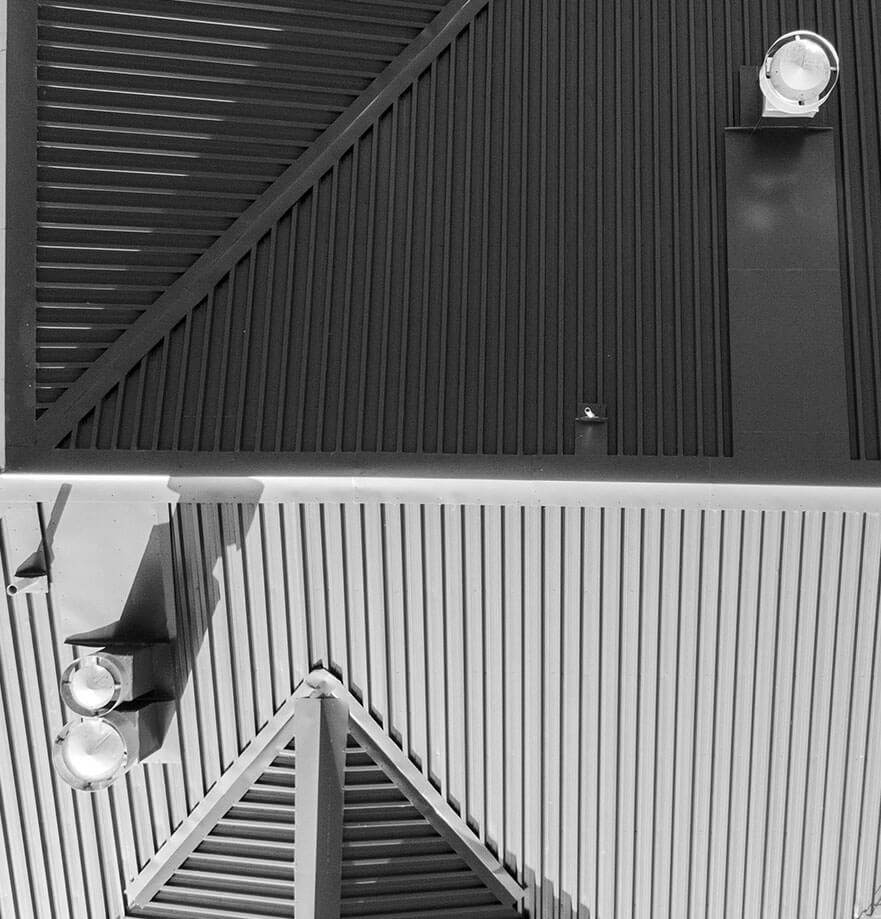What does RTU stand for, in HVAC? “Roof top unit”, also referred to as a “packaged unit” because it is a self contained HVAC unit that can provide both heat and air conditioning.
RTUs are the most common heating and cooling HVAC unit found in the small/midsize commercial applications in the US. In most cases, the RTU will sit on the roof, supported by a curb that is attached directly to the structure. The return and supply ductwork drops are connected to the inside of the curb and the RTU will use these ducts to transfer the air.
WHAT IS RTU, IN HVAC?
Typically RTUs are made up of the following:
- Condenser coil
- Compressor
- Blower motor and fan
- Heating components (heat exchanger, heat source, venting)
- Control components
- Curbs
- Economizer Hoods
- Power exhaust
RTUs sit on the roof, supported by a curb that is attached directly to the structure. The return and supply ductwork drops are connected to the inside of the curb and the RTU will use these ducts to transfer the air.
RTU APPLICATION
RTU’s will excel in warehouses, office buildings (less than 10 stories), restaurants, shopping malls and the like.
PROS OF RTU
- Lower cost as they are factory built and tuned to optimal performance
- Increases indoor space
- Replace an existing unit with ductwork/power/fuel already in place
- Larger temperature range
- Centralized maintenance
- Quiet operation
- With use of economizer it can use natural outdoor heating and cooling
CONS OF RTU
- Exposed to the elements
- Exposed to wildlife
- Lack of maintenance
- Can cause vibration (unless used with spring isolated curbs)
- Require roof space and access
- Penetrations through the roof – increased chances of the roof leaking
OPTIONS
Although this is not the only application, the downflow (down discharge) unit is typically the most common. Other side discharge or top discharge units are available as well.
INSTALLATION TIPS
- Fuel source
- Power source
- Curb or mounting options
- Ductwork
- Use a few layers or rows of gasket to ensure a tight seal to the curb and ultimately increase efficiency
- Remove the forkwell brackets, shipping material on the bottom BEFORE landing the unit on the curb
- Inform the electrical contractor/control contractor so they can bring the whip through the bottom of the unit and not through the ductwork
- Level the curb
- Look at local flu venting codes (typically 3’ higher or 10’ away from fresh air intake into the building).
- Place units away from high visual areas (aesthetically more appealing and keeps thieves away from the coils – out of sight, out of mind)
- Place units where they can be easily accessed for maintenance
- Ask if they tie into the fire alarm system
RTU MAINTENANCE
Preventative maintenance is a crucial part in extending the life of any equipment. Consider the following when doing simple maintenance:
- Filters / screens – change the filters each season change or more as necessary
- Check belt tension
- Clean coils
- Check refrigerant
- Check drainage
- Inspect all mechanical components


